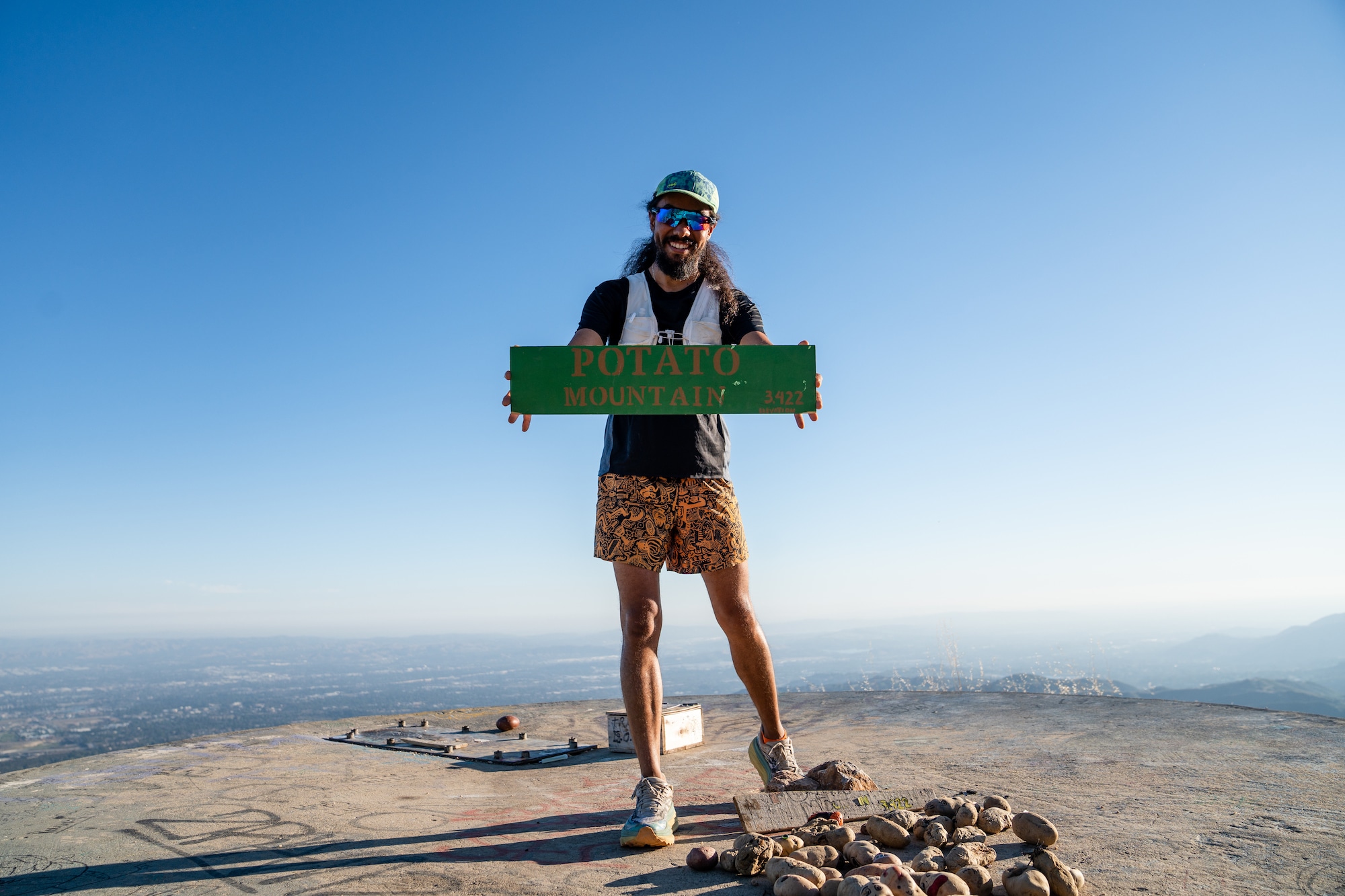Defining the word “run” seems straightforward. It’s the process of going forward fast on foot–or, if you want to get technical about it, moving “with quick steps on alternate feet.” But wait, that’s just the first entry in the Oxford English Dictionary. You could also be going out on a run, as in the “act or spell of running.” Maybe a runner runs into a friend while running next to running water and takes a moment to run an idea past them about a dog run. Yikes!
As many have reported, “run” has a whopping 645 different interpretations (or more), a tally some experts say earns it the title as the most complicated word in the English language. It’s not only the lexicographers who find themselves wrestling with the term, however—REI Store Manager and avid quick stepper Alan Ortega takes issue with it as well. “I have always told people I like to run,” he says. “I’ve never said, ‘I am a runner.’”
Many who partake in the activity can relate: Maybe it’s something you do, but not who you think you are. And therein lies the beauty of the running journey: As Ortega discovered his love for running over the years, in its many forms and permutations, his sense of self also started to shift.
Read on to learn more about Ortega’s running journey and check out some of the tried-and-true gear that’s helped him level up over the years.
Watch the Video
Nearly a decade into his running journey, Ortega’s mindset is beginning to shift. He’s exploring different types of terrain, taking a closer look at his training regimen and revamping his closet accordingly. That evolution—and some of Ortega’s favorite gear—take center stage in the short film, How I Became a Runner.
Jump ahead: Take me straight to the gear.
What Does It Take to Be a Runner?
If Ortega’s face–or perhaps his flowing locks–looks familiar, it might be because he’s been the front man for Run With REI Co-op since August 2022. He’s put in the miles to bring thousands of YouTube viewers and REI member along on a rim-to-rim-to-rim run across the Grand Canyon, a 93-mile circumnavigation (on foot of course) of Mount Rainier, a 100-kilometer trail race and more. Along the way, he’s improved his technique, picked up tips from greats like Scott Jurek and shared recommendations on everything from Brooks running shoes to route planning.
One might think all that running would make someone, well, a runner. Ortega isn’t so sure. “When I started getting more and more into trail running, and I started to do more adventures, I would run into people on the trail that would say things like, ‘Yeah, you’re a runner,’” he says. “It blew my mind. It didn’t make sense to me.”
That’s because for most of Ortega’s life, running led to flare-ups of asthma. The term “running” was synonymous with misery. “I didn’t grow up running,” he says. Actually, “I didn’t feel physically well when I ran. … I kind of avoided that.”
Going Uphill and Getting Dirty
It wasn’t until 2014, when a friend took him on a trail run on Mount San Antonio (better known among the locals as Mount Baldy) that Ortega’s understanding of what running could be expanded. “I fell in love with mountain running,” he says. “[Running] just meant being out in the mountains, being out on the trails, enjoying myself, not being specific to any one goal.”
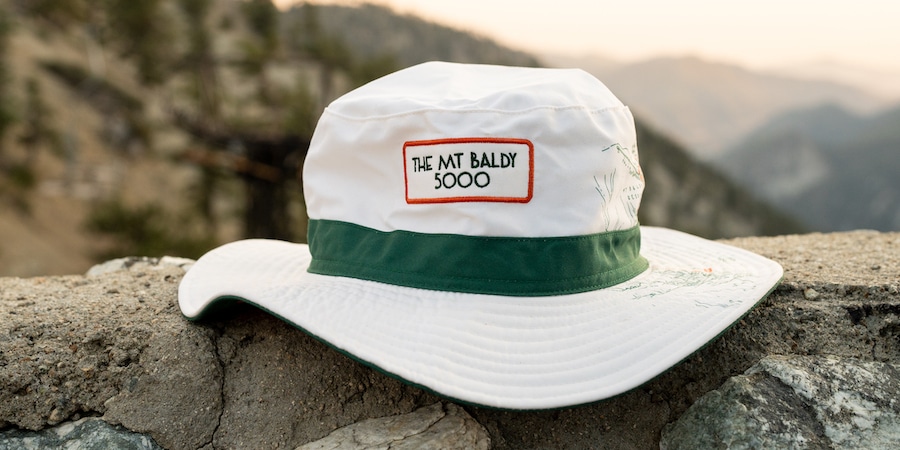
As he started tackling Los Angeles-area mountains like Cucamonga Peak and Mount Baldy, running became a way to explore new swaths of wilderness and “see how long I could be out [there],” he says. He joined friends on runs up Potato Mountain’s fire road, and the sport became an avenue to strengthen relationships. The miles he put in on Schabarum-Skyline Trail, in West Covina, CA, helped him clear his head. “Whether I was feeling really good or really bad, I think the trail just helped me connect to how I was feeling.”
Smooth Moves
When Ortega accepted a senior sales manager position with REI in 2020, and moved from sunny Los Angeles to soggy Seattle, his definition of running grew again. It turned into a feat of prioritization and perseverance. “It rains a lot,” he laments about the Pacific Northwest. “People would tell me, ‘Don’t look at the weather apps. Ignore the weather apps. Just open the door. If it’s dry, go run. Stop everything you’re doing and get outside.’”
To catch those windows of sun (or just not rain) Ortega revised his running routine. He still preferred the dirt, but he began to embrace the pavement. He could simply throw on a pair or road shoes and head right out the door. “Road running … made me feel like running was a lot more accessible than I’d previously thought.”
He picked up a pair of HOKA Rincon 3s and running became simpler. Rather than having to spend double-digit hours on the trail, he could fit in a quick after-work workout.
When Ortega participated in the New York City Marathon in November 2022–a starting line he never thought he’d queue up for–running’s meaning expanded once more to include camaraderie and infectious energy. It also left him wanting more. “There was no training for my first marathon,” Ortega says. “I just ran on the trails a lot and that translated to be[ing] able to run for that long on the road. … I probably would have walked some of it if it wasn’t for the crowd.”
What might happen, he wondered, if he was more intentional about his preparation?
Back Where the Journey Began
In the past two months, a lot has changed for Ortega. An opportunity to open a new REI store in Los Angeles has brought him back to his home city where he’s looking forward to reconnecting with old friends and re-running many of his favorite routes. “I’m excited to see what I can do and get in better shape—and just have more fun.”
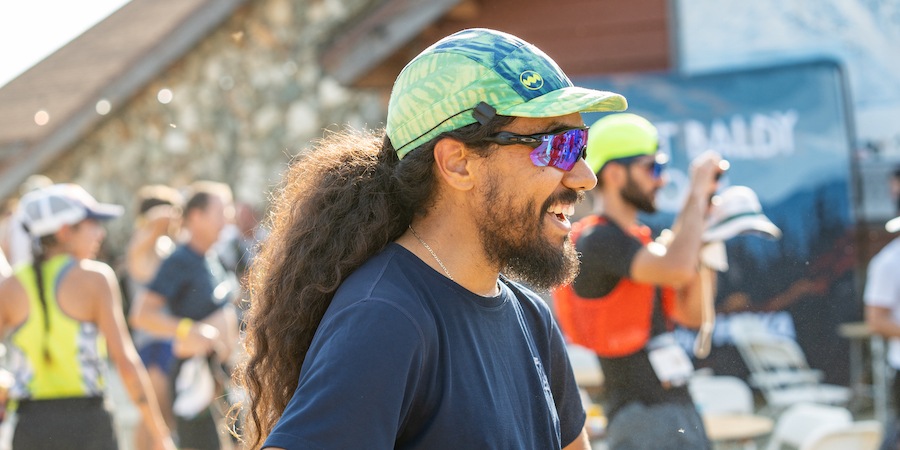
More fun in the mountains, yes. But he’s also hoping to “maximize” his fun on his second go at 26.2 paved miles. He’s been working with a coach, honing his footwear lineup and learning new-to-him vocab like “base miles,” “speedwork” and “tapering.” He’s beginning to embrace both the road and trails, he says, “and just think about it [all] as running.”
Does Ortega’s journey make him a runner? It sure does in our minds. After all, if the shoe fits, run in it.
Gear Guide
Ortega’s favorite gear picks pop up frequently on the Run With REI Co-op YouTube channel, but a few favorite pieces have been integral to his pursuit of an even more enjoyable second marathon experience. Read on to learn about his quiver of road shoes and the running vest with the “least amount of bounce … I’ve ever worn”:
HOKA Stinson 7 (Women’s, Men’s)
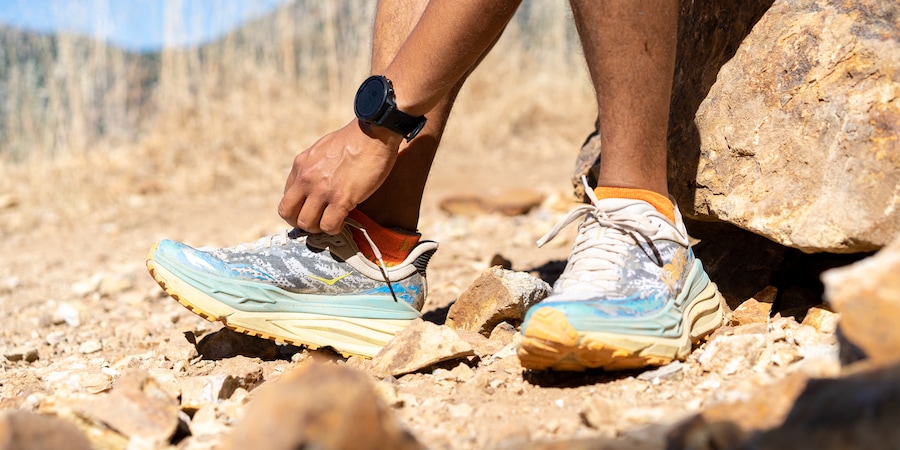
One great way to jazz up the humdrum of marathon training: Substitute standard training runs with a short-distance race. Enter the inaugural Trials of Miles Mt. Baldy 5000, which Ortega ran earlier this summer. Like many trail races, this 5K takes place on a dirt course with cheering crowds and stellar views. Unlike other trail races, the Mt. Baldy 5000 has at 5pm start-time, gains a lung-busting 1,500 feet of elevation and features an après-race barbeque.
Going into the Mt. Baldy 5000, Ortega knew the terrain would be steep and gravelly, most of it exposed to the unforgiving California sun. Those conditions led him to reach for the HOKA Stinson 7, a shoe with versatile traction (thanks to 4-millimeter, multidirectional lugs), a secure fit due to the Deep Active Foot Frame with wraparound side walls and the brand’s signature cushioning. Likewise, the jacquard mesh upper would provide much-needed breathability. “I love cushy trail runners,” Ortega says. At first glance, the shoe’s profile was “intimidating, but once they were on my feet, I didn’t want to take them off.”
New to this seventh iteration of HOKA’s Stinson franchise is H-Frame technology, which, according to the brand, serves to stabilize each stride and deter excessive inward roll without overcorrecting the runner’s gait. “The H-frame kept me from rolling over the incredible stack height cushioning me underfoot,” Ortega confirms. “They inspired confidence in a way no other shoe has.” $170
adidas Adizero Boston 12 (Women’s, Men’s)
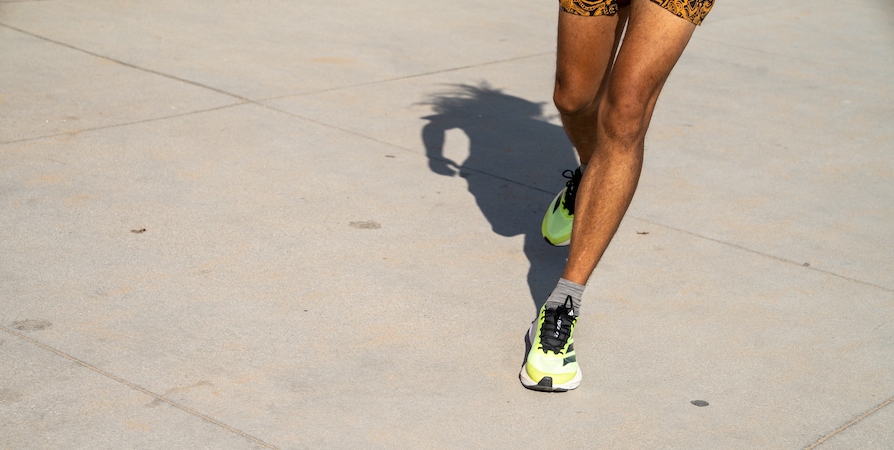
Anyone who laces up their sneakers and dreams of pounding out 26.2 paved miles sees Boston as the bucket list marathon destination. And it’s from this iconic race that the adidas Adizero Boston 12 draws not only its name but also the inspiration behind its design.
Best suited for middle and long-distance pursuits on the road and track, the Adizero Boston 12 from adidas marries responsiveness with comfort. That magic blend comes from its combination of Lightstrike and Lightstrike Pro cushioning, which are paired with embedded carbon Energyrods 2.0 to minimize energy loss and boost forward propulsion. For Ortega, these attributes–along with a breathable, recycled polyester mesh upper–made the Adizero Boston 12 an obvious choice for race day. “They just felt like I had springs under my feet,” he says. “Once I decided that these [were] the shoes that I [was] going to wear for [race] day, it [was] important to spend some time in them.”
Ahead of the race, Ortega laced up the Adizero Boston 12 for his tempo runs and speed workouts. “Days on the track should be short mileage, but I should go home feeling really tired,” he says. That was a new concept for someone who, until recently, had been a trails-only type of runner. “I’ve never even sprinted before, … so it was a learning curve. But what helped was figuring out the [right] shoe. The Adizero Boston 12 helped push Ortega to his potential. $160
HOKA Clifton 9 (Women’s, Men’s)
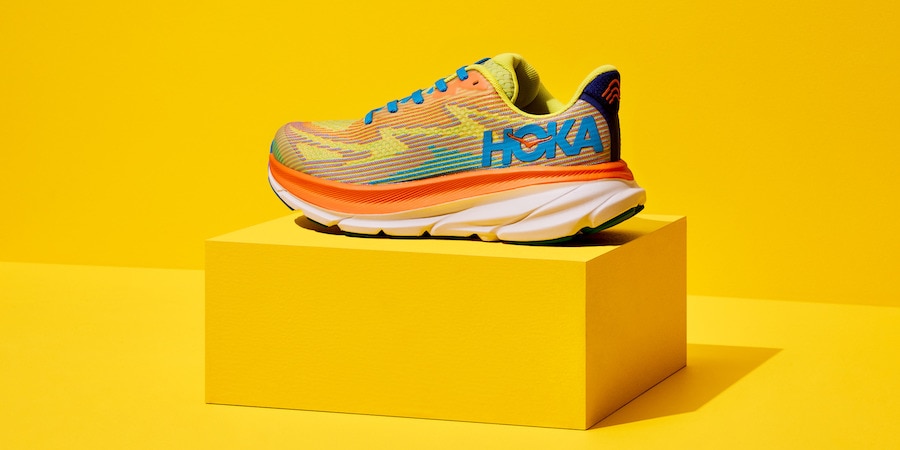
When Ortega wasn’t zipping around on speed-work days, he was cruising along in heart rate zones 1 and 2 for hours at a time. In other words, he runs slow. “I don’t have a distance in mind. I’m just … focus[ing] on my breathing, on my form, really enjoying the run.” This easy-run ritual became treasured for Ortega, as he was able to savor the miles while recovering for the next hard session.
And the HOKA Clifton 9 proved to be the perfect companion for these runs. Designed to offer ample cushioning in a relatively lightweight and delightfully reactive package, the latest member of HOKA’s award-winning and customer-beloved Clifton line features a 32-millimeter stack height at the heel and 27 millimeters at the forefoot (3 millimeters more than previous iterations) and weighs in at just 8.7 ounces for the men’s size 9 (4 grams less than the Clifton 8). Breathable, vegan-friendly, recycled-content mesh comprises the upper. Underfoot, new CMEVA foam and an early-stage meta rocker silhouette deliver inherent stability.
Overall, the Clifton 9 lives up its billing as a disruptive daily runner, Ortega says. “There’s a ton of cushion below. It’s really comfortable and really … supportive,” he adds. “It’s hard to find a shoe that feels reliably comfy for hundreds of miles as a daily trainer, but the Clifton makes you a believer.” $145
REI Co-op Swiftland TT Hydration Vest (Women’s, Men’s,)
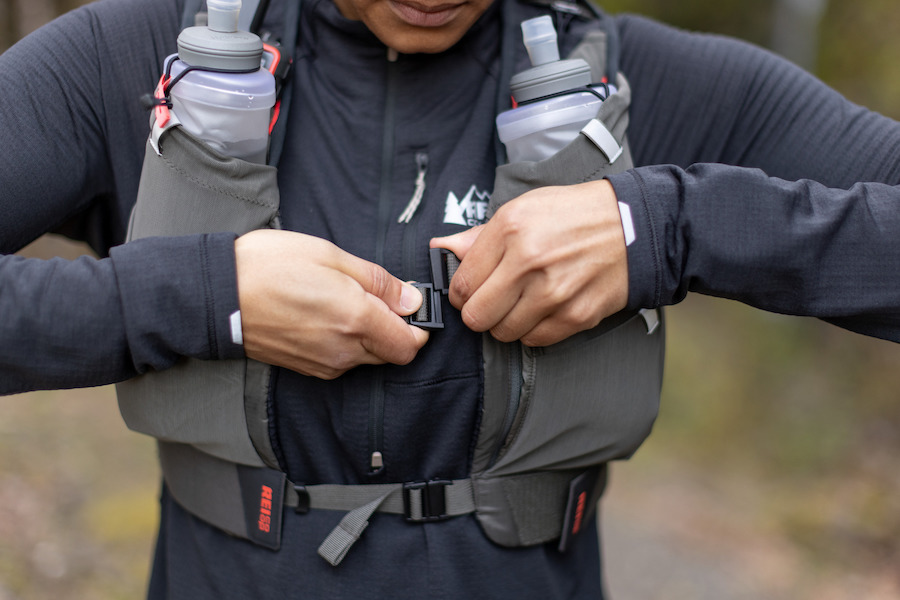
Ortega has long been a fan of the Salomon Adv Skin 12 Set Hydration Vest, even selecting it for his 93-mile, three-day trip along the Wonderland Trail last summer (watch his adventure here). For the past few months, however, he’s been reaching for the REI Co-op Swiftland TT Running Vest instead, a vest customers have called the “best running purchase ever” and an “excellent training companion.”
As Ortega explains in his video review, the Swiftland TT Hydration Vest earned top billing in his mind thanks to its performance in three key areas: fit, capacity and accessibility. Not only do three different size options in both the men’s and women’s versions create a sure–fire fit, but the vest also stays in place thanks to a combination of two adjustable front torso straps, shoulder compression cords and wide hook-and-loop straps on the sides.
The vest boasts a 7-liter gear capacity, but after testing it on multi-hour runs in both the Grand Canyon and in the Pacific Northwest, Ortega realized it can carry even more. “It’s comfy when you’re putting in hard miles uphill, having fun flying downhill, or keeping your cool coasting on flowy singletrack.”
Two chest pockets make snagging a sip from the HydraPak 500-milliliter SoftFlasks (included) a breeze, and a pass-through pocket on the back facilitates easy-access to gloves, small snacks or anything else stashed there. Bulkier layers or a hydration sleeve (not included) fit into the larger, zippered back pocket. Other gear (hiking poles, for example) can be secured using the removable bungees or any of the multiple lash points. “Gear should complement your adventure,” Ortega says. “Certainly, I feel that way when I look at the Swiftland TT.” $120
